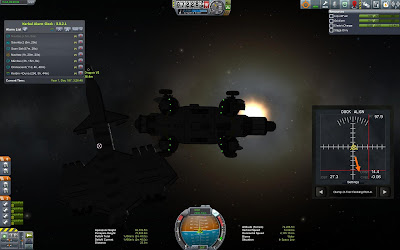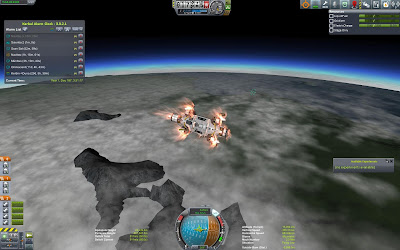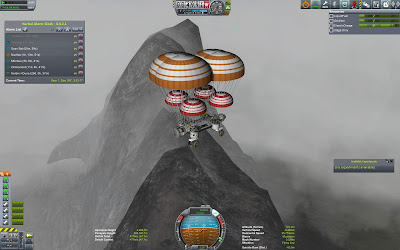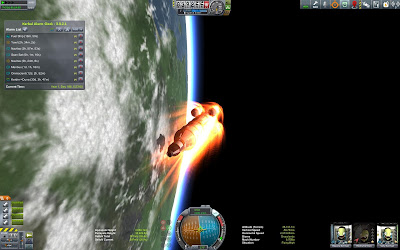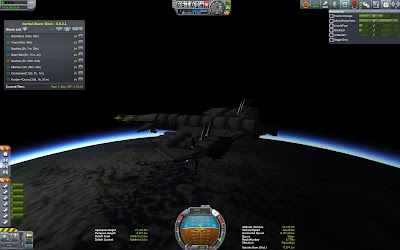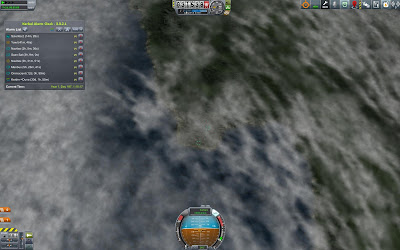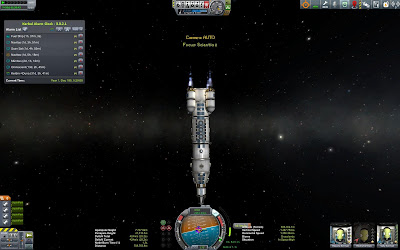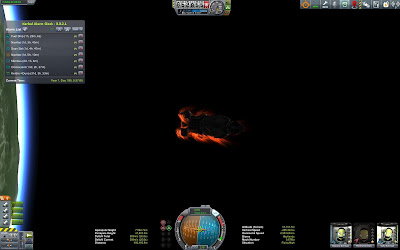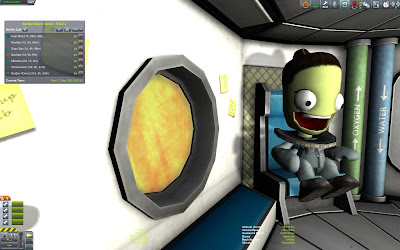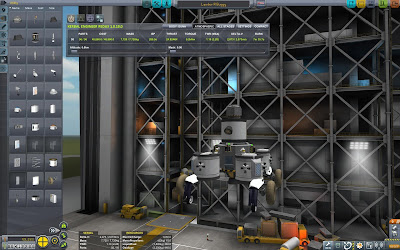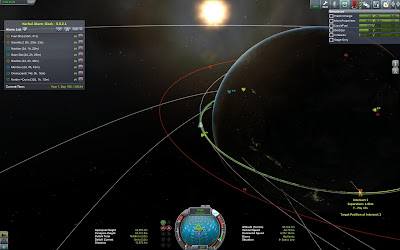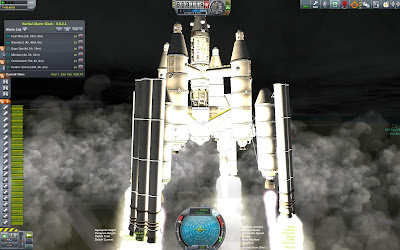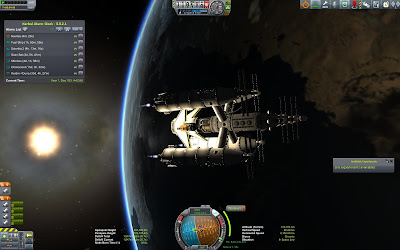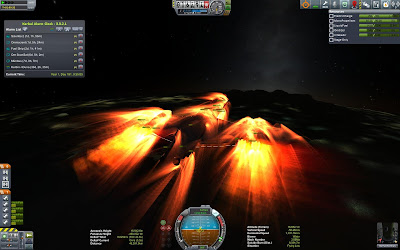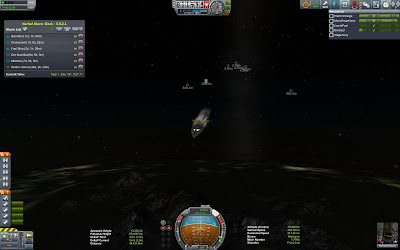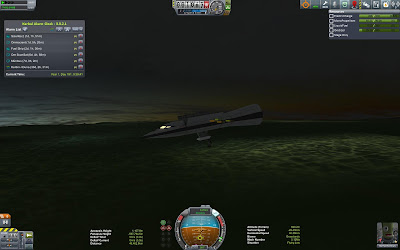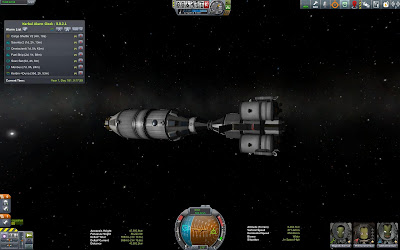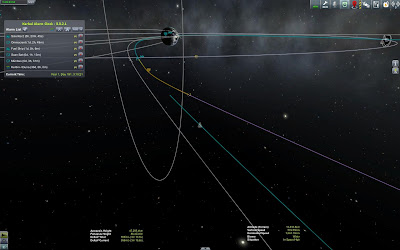In the beginning, I was impressed by blogs from all those players in EVE: Online and had regularily read a small number of them. Then, at one point, I started to write to a pen pal about "my adventures" from a particular game session, kind of trying to explain to a non-gamer what adventures you can have in a virtual reality. The moment I realized that it was fun to write about "my VR adventures", and this was actually the birth of the inspiration to start this blog. Yet, I wasn´t sure if I could stay so committed to a blog; I would have hated to produce one of those numerous unfinished art webpage. But I am glad that I finally took a heart to start, and I am glad I followed through.
From July until December 2014, my stories were about my adventures in the beta version of Elite: Dangerous, driven in particular by the evolutionary idea of complementing the game soon with virtual reality goggles, the Oculus Rift. Sometimes there were short excursions into other topics which was fun to write about. A highlight certainly was my attending of the Elite: Dangerous Premiere Event and my first Oculus Rift experience. I also dabbled a bit into doing videos from some of my space battles, the most notable I remember were a battle in a Lakon Type 9 freighter versus three Cobras, and a PvP battle in a laser-equipped Anaconda heavy cruiser versus a missile-equipped one. Both fights were very close calls and exciting for me to re-view.
After all this intensity, I indeed felt a bit out of steam when the "final" Elite: Dangerous was released, so there was a little hiatus from 15 December to 20 January and even then I still felt kind of too sore to get back into the game and write about it. Still, in the following, there were some cool highlights, and my game experience culminated in a serene expedition to the galaxy´s upper rim, aka, "Having climbed the stair of stars". Somehow, shortly afterwards, there was this strange moment where a game suddenly is "over".

- a feeling of being thousand light years out there alone; it is rare for a game to produce such impressions
This is when, from one moment to the other, you just walk away, no goodbye said, because you still believe you will get back to it and into it. Yet, it does not happen. This reminds me of the time when all those "addicted" gamers in World of Warcraft made big announcments about leaving. Most came back because the game was still in their mind and blood. I think the true moment where you walk away from things is when you realize that you gained every experience possible, uncovered every secret, satisfied your craving.
- Darkshore; shot by another player, I have been there, too; it feels so familiar, an epitome of a romantic craving which World of Warcraft managed to satisfy for me
I might slightly disagree, or maybe even not, with these excellent blog articles ("Tragicocomedia") from a guy who wrote about his computer game addiction. In my opinion, if you still need and want the essence of that experience, you never can walk away with satisfaction and will always crave to come back, unless there is a viable alternative, unless the sleeper wakens. This is not an addiction; this is human nature, because enlightened mankind always have to get to the bottom of things. This is about a life which has evolved above the necessity of looking for food and the pleasure and pain of procreation, refusing to follow ursurped routine without making any sense.
This phenomen kind of reminds me of a chapter in "The Neverending Story" from Michael Ende. Bastian, beaten and hopeless, nurtures a new wish, and thus he is being led to the house of a tree-woman, Madame Aiola, in a chapter which represents being and feeling home. The fruits plugged from and offered by the tree-woman are most delicious and Bastian feels like he can never get enough of them. Yet, as time passes, his craving gets less, until finally, it has been satisfied. The fruits still taste heavenly good, but the craving slowly, imperceptly, has vanished, is satisfied. And Bastian, having experienced and embraced comfort and peace, realises that it is finally time to move on and find his way. (Really, read this book if you haven´t yet, it can become a personal bible about the essence of happiness!)
- storytelling at its pinnacle
So, here I was in March, satisfied and ready to move on, but the thing to move on towards was not there yet; for example, using VR goggles and having an according VR world to explore. Elite: Dangerous wasn´t as developed as I had hoped and the Oculus Rift´s release is still targeted for 2016. Thus, also a grave danger for the existence of this blog.
This was the where the beta version of the Kerbal Space Programme came to my attention. It had all those things which I was missing in Elite: Dangerous, and the latter anyways would only unfold its true grandeur once the VR goggles are available. In the meanwhile, the Kerbal Space Programme offers the ability to design and construct your own spacecraft, to experience "real physics" condensed into playable format, and a seamless virtual reality where you can go anywhere in the solar system, travelling to and landing on any astronomical body.
I am not sure when I am going to walk away from the Kerbal Space Programme. This might even be soon, once the tech tree has been all opened, every planet been visitied and every possible design to my taste been done. But I am trying to draw the time out until then; there is not much on the computer game horizon which lures me. Maybe Mass Effect 4, maybe the new Shadow Realm CRPG "Hong Kong", maybe one more run through Dragon Age 3? But those games are more like storybooks or movies, thus not suited to be the foundation for original VR adventures; writing here about it would be just like retelling a good book. A good VR game would require the capability of emergent gameplay, i.e. a kind of sandbox environment, or et least the possibility to create your own story from a suitable generic quest structure.
Anyways, for this blog, it will always be stories from about virtual reality first, not just any computer game which I happen to like. Elite: Dangerous and Kerbal Space Programme qualified for this. My next new dream game would optimally be a mix of the realistic galaxy simulation from Elite: Dangerous and the realistic space travel simulation from Kerbal Space Programme, including the building of spacecrafts and the landing on planets, possibly building colonies there; and all with VR goggles, of course...
Ok, enough rambling, onwards and upwards! I hope there will be enough material for me to write about, so that this blog may continue for a long time still.


